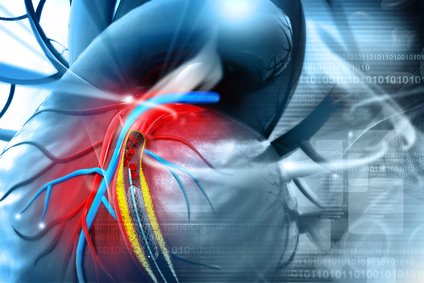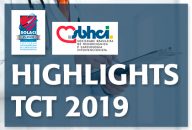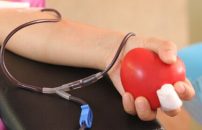After the large studies which set provisional stenting as the preferred strategy to treat bifurcations comes the double kissing crush technique (DK crush) to break the mold once again. This time, the DK crush technique is tested against provisional stenting in the left main, with a 3-year follow-up. The DKCRUSH-V, soon to be published in…
TCT 2019 | EXCEL: Left Main Coronary Artery Angioplasty with Favorable Results at 5 Years
Courtesy of Dr. Carlos Fava. Unprotected left main coronary artery angioplasty with drug-eluting stents has emerged as an acceptable strategy for a select group of patients, with results comparable to those of myocardial revascularization surgery at 2 or 3 years. However, beyond such term, we had no valid information. Researchers analyzed the 5-year follow-up results for the…
TCT 2019 | IDEAL-LM: Bioabsorbable Polymer DES vs. Permanent Polymer DES for Left Main Stenosis
Courtesy of SBHCI. This study showed that using the everolimus eluting stent with bioabsorbable polymer Synergy followed by 4 months of dual antiplatelet therapy (DAPT) to treat left main stenosis (LMS) was safe and effective, compared against using the everolimus eluting stent with permanent polymer Xience followed by the conventional 12 months DAPT. This study…
DK CRUSH Is Still The Best Option
Courtesy of Dr. Carlos Fava. When it comes to severe unprotected left main distal bifurcation lesions, surgery continues to be the preferred treatment option. However, due to the growing number of patients that cannot receive surgery, left main PCI has significantly advanced, and though the strategy in this scenario remains controversial, double kissing crush stenting…
Calcium Scoring: “Location” Seems to Be More Important than “Percentage”
The presence of a high percentage of calcium in the left main coronary artery is independently associated with a 20–30% greater risk for cardiovascular and all-cause death in asymptomatic adults. This highlights the fact that calcium location, and not only amount, is important. Calcium scoring reports from computerized tomography (CT) usually inform only that: how…
Surprising EXCEL Outcomes in Diabetics with Main Left Stenosis
This study especially designed to compare PCI vs. CABG in patients with left main coronary artery disease and low to intermediate Syntax score showed that 30-day and 3 -year outcomes of PCI with everolimus eluting stents vs CABG were consistent both in diabetic and non-diabetic patients. The randomized EXCEL trial (Evaluation of XIENCE versus Coronary…
CTO: in Radial Access with Similar Results to Femoral
Courtesy of Dr. Carlos Fava. One of the characteristics of chronic total occlusion (CTO) is the use of two access routes: femoral and radial. The radial approach is safer, but it has not been thoroughly analyzed in this type of PCI. The study looked at 3709 patients undergoing left main percutaneous coronary intervention (PCI) for…
Left Main PCI Technique Could Change DAPT Duration
Up to 20% of patients undergoing left main PCI require a 2-stent technique, and this number should most likely grow after the DKCRUSH-V outcomes. However, this study contradicts the DKCRUSH-V and brings us back to “the simpler the better”, since patients undergoing 1 stent left main PCI presented less revascularization and less target vessel failure…
What is the best antiplatelet in PCI to vein grafts?
Courtesy of Dr. Carlos Fava. PCI to saphenous vein grafts is one the greatest challenges these days because, as opposed to native arteries, they present important thrombolytic material, diffuse and long lesions, and abundant macrophage and inflammatory cells, which makes the procedure more complex. At present, we have not yet agreed on the best antiplatelet…
Radial Access Is Always Preferred, Even for Treatment of the Left Main Coronary Artery
The potential need for a 7-Fr guidewire, the use of several coronary guidewires and/or a kissing balloon, and the requirement of indispensable monitoring by intravascular ultrasound (IVUS) have been used by some interventional cardiologists as excuses to resist radial access. In that sense, left main coronary artery angioplasty was the last stand of femoral access.…








